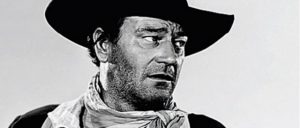American Heroism: a discussion of bandits, cowboys, super heroes, and more
By looking at the main American masculine heroes over time, important ideologies about the country’s culture are exposed. Preliminary investigation of some of these heroes, along with a more in depth look at recent trends in American cinema reveal how deeply connected cinema and culture are, particularly by revealing the trend that emerges when films blend myth and reality to explore – and expose – our deepest cultural fantasies and fears. Looking at three of the largest heroes that cinema has explored in the past – bandits, cowboys, and superheroes – it is clear how each reveals deep resistance to mainstream cultural occurrences. Furthermore, there is a new trend emerging in the “anti-hero” that links with recent trends in American culture, together providing insight into the state of the American psyche today.
Beginning before and beyond the forming of the United States of America (and film), in English folklore we have the most famous bandit of them all – Robin Hood. Robin Hood was in blatant opposition to distant authority figures who wrongly tax the poor to be able to live their exorbitant lives. “The Noble Robber,” as everyone knows, stole from the rich to give to the poor. In contemporary uses, however, the myth of Robin Hood becomes warped. Exploring this through a series of economic comparisons of today’s political right in places like the United Kingdom and the United States, James Meek speaks about the “conceptual rich” embedded in rhetoric from figures like George Osborne, David Cameron, Marco Rubio, and Stephen Harper. Today the “conceptual rich” has been warped to be seen as people who live off of benefits and government handouts, “in characterising ‘hard-working people’ as the conceptual poor, no matter how technically rich they might be, right-wing polemicists evoke a class of people who are not hardworking.” The myth of Robin Hood functioned well in times of feudalism, when people could not warp or deny who was the rich or the poor and could not ignore the level of inequality that abounded. Robin Hood was able to create the fantasy of the world that people needed – one that was more equal – he was, however, not powerful enough to transcend different societal structures to remain relevant and applicable. Thus a new hero was born out of a specific political and cultural climate.
With the creation of America and the settling of its wild west, arose a new masculine trope. One that both literally and metaphorically lived at the edge of the world (the edge of the world from a european perspective, that is.) Most popular in the first half of the 20th century, the Western, with its mainstay, the cowboy, rose in place of the bandit. James Folsom, in his essay ‘Western’ Themes and Western Films, writes “the Western mirrors a persistent nagging doubt in American life about whether the choice which America made to become a great, capitalist, industrial power was indeed a wise one.“ The cowboy figure is always on the threshold, fighting to live in the wilderness while always keeping one foot in the door of society. Westerns, while frequently historically inaccurate, show America’s cultural resistance and skepticism of the growing presence of capitalism and urban living.

However, ultimately the west was settled, capitalism won, and the idea of the cowboy as the American hero could no longer be seen as realistic, and its presence in American cinema moved to nostalgia (The Hateful Eight – Tarantino 2015). Needing a new hero, American films turned with increasing fascination to the superhero. Originating not from film, but comics, superheroes were considered pulp interests until brought into the mainstream limelight by Hollywood. Most of the figures in it act to either support or supplant law enforcement. Battling injustice or shortcomings in the system by operating outside of it to correctly handle the crimes that lawmakers, authorities, and police were either mishandling or ignoring. Instead of targeting the system as a whole, superheroes operate essentially by using the same authoritarian ideals, but simply employ their own mechanisms for execution. They typically battle a singular foreign unit that is too strong for a measly police force. Regardless of era, most superheroes are contribute positively to society by fighting criminals – even if these contributions go unrecognized. They also often inhabit traditional roles or masculinity. Picking up in popularity in the second half of the 20th century and continuing today with a strong recent increase in large scale blockbuster reboots, superhero movies reveal how American culture moved from being afraid of its larger functional and political mechanisms, to being afraid of foreign, unknown entities that were seen as provoking and instigating violence on home turf.
In terms of actual character all three of these figures all fill essentially the same role. Bandits, cowboys, and superheroes are all independent, resourceful, solitude – all things that Richard Sparks, in his essay Masculinity and Heroism in the Hollywood “Blockbuster”, notes “demand the social marginality of the principal figure.” They all create their own rules and enforce them themselves – all “authority figures rebelling against authority.” Applying Douglas B. Holt and Craig J. Thompson’s model “the American Ideology of Heroic Masculinity,” which states that there are three types of masculinity that are common in American cultural rhetoric, the breadwinner, the rebel, and the man-of-action hero, it is also clear how all three of these types of heroes make their way into the third category “man-of-action hero” – the stated masculine ideal of the three. The “man-of-action hero” has the vision and guts to transform weak institutions into something stronger, he operates outside of social order to maintain a better status quo, he lies precariously between the breadwinner and the rebel by being able to both support himself and others, but is not emasculated by corporatism or selling out and retains his ability to operate by his own rules. He is both “magnetic” and “threatening.” Even Batman, a masked “vigilante” fits into this traditional role of hero, who operates outside of social order, acting as a rebel, but still strong, wealthy, smart, and protective of his romantic love interests.

There is a new filmic trend emerging that may be a guiding force in understanding American culture today. The superhero is becoming more human, more realistic, and more complex through ideas of the vigilante “anti-hero.” Films such as Hancock (Peter Berg, 2008), Deadpool (), and most recently American Hero (Nick Love, 2015) all feature male leads with some form of superpower, but all are careless, reckless, irreverent, and frequently either abuse substances or are explicitly alcoholics. American Hero for example follows Melvin (Stephen Dorff), who lives at home with his mother (when he isn’t too drunk to simply fall asleep somewhere on the street), has a child whom he lost custody of, and consequently spends all of his time partying. His superpower is that he can lift and move objects with his mind. We learn throughout the film from other characters about small deeds that he has done. For example, the film is set in New Orleans, and we learn that he without provocation or compensation helped to fix homes that had been destroyed during Katrina. Similarly, we see that he often stops minor theft and with drug busts – for the most of the film, however, he simply takes the bounty for himself. This new vision of a hero is flawed, is relatable, is jaded. Melvin is all about the small scale good things that he can do for those that he sees suffering around him. Unable to fight increasing inequality and the large scale negligence that occurred in New Orleans after Katrina, he simply keeps his head low and repairs what he can. Melvin is a step closer to Robin Hood, he is a step back towards opposing a distant authority figure that does wrong by fixing things immediately in his vicinity. New Orleans is his Sherwood Forest, and while he is not providing money, he is giving people back their power and autonomy – which is ultimately what Robin Hood was doing too.
The growing trend of an American anti-hero can be read as a disillusionment with increasingly distant people in control, a more realistic view on the world, and a growing understanding that America is returning to the unequal place that thrived in Europe when Robin Hood was the hero.
Comments are closed, but trackbacks and pingbacks are open.